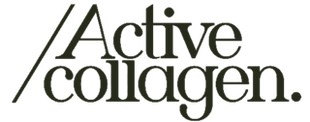We’ve all heard the wonders that collagen can do for our physical appearance – hair, skin and nails – but what about the appearance of our bones?
Collagen is a protein that is found in abundance throughout the body. It is a major structural component produced by the body for organs such as skin, tendons, cartilage and bone. The type of collagen found in skeletal bone tissue – including teeth - is type I collagen, which is also prevalent in around 90% of the human body’s connective tissues.
Our bones are a constantly active organ that remodel throughout our life. Bone is a material that is made up of both inorganic minerals and organic proteins, as well as water. The inorganic, or bone mineral, element of bone tissue is what gives bones their stiffness and compressive strength. The organic proteins are again made from 90% type 1 collagen which gives bones their flexibility and structure. Both are a part of bone remodelling where specific cells take away old or damaged bone and add new minerals and proteins to protect bone integrity.
When talking about the value collagen has on our bone health it is interesting to note that its importance differs throughout different life stages. From the development of bones in children and adolescents, preserving bone density, and protecting bone deterioration in the elderly, collagen plays a part.
Collagen for Developing Bones
The development of healthy bone density during stages of childhood and adolescence is crucial for preventing bone loss at a later stage. It has been established through recent research that appropriate intakes of protein are a necessary component of bone remodelling. Of course, we have all been drilled with the importance calcium has on optimal bone health, which is still an important factor. However, having suitable amounts of minerals in our bones, such as calcium, is shown to be influenced by protein intake.
A study on the influence collagen supplementation has on bone remodelling in pre-pubescent children found that supplementing hydrolyzed collagen and calcium over 4 months showed greater markers for bone formation. Therefore, when supplemented alongside optimal calcium intakes collagen may influence bone growth in this age group.
Protein intakes differ between gender, age and activity levels in children and teenagers. From 4-18 years boys require an average of 0.9-1g/kg, whereas girls require more between 4-13 years, 0.87-0.9g/kg, than between 14-18 years, 0.77g/kg.
Getting children to take any kind of supplement can be tricky but most collagen powders can be easily added to foods without the fussiest of eaters knowing. Add to smoothies, hot chocolates, baked goods and porridge for an extra protein boost.
Collagen for Preserving Bones
After the major growth of our bones takes place during adolescence this usually ceases during our early 20s until noticeable depletion starts to occur, nearing 50 for men and during menopause for women. So up until then, preserving the density of our bones is crucial for minimizing disease risk.
Over the course of natural aging, collagen levels gradually reduce in the body. This looks like a 1% drop in collagen per year. There is wide evidence of this in regard to the loss of collagen in the skin but now some evidence suggests that changes in bone mineral density coincide with decreasing bone collagen levels. A gradual loss of bone collagen would cause a gradual loss of strength and structure, which undoubtedly has an emphasis on developing diseases such as osteoarthritis and osteoporosis.
The great news is that collagen loss is reversible and increasing collagen levels can be supported through consistent collagen and protein intake. Type I collagen supplementation has been studied to increase bone regeneration when taken by those with bone defects. By taking a good quality hydrolyzed collagen supplement daily – before you start experiencing the effects of aging bones – this can help with the synthesis of collagen and prevention of bone disorders.
Collagen for Protecting Bones
Protecting your bones later in life is not only beneficial for preventing bone related disease and fractures, but also increasing overall quality of life.
The most prevalent of the age-related bone disorders is osteoporosis, more dominant in women affecting 1-in-3. This is due to the quick decline in hormone levels such as estrogen following menopause which, when low, the rate of bone loss is faster. Up to 10% of bone density can be lost during the period of menopause. Another factor that induces osteoporosis in women is of course age-related processes, such as collagen loss, that decrease ongoing bone formation. Outcomes from clinical studies have found that supplementing 10g of hydrolyzed collagen daily has positive effects on reducing bone collagen breakdown.
It is also never too late to take control of your health for the better. A study on postmenopausal women – aged 46-80 – with low bone mineral density showed positive bone formation and reduced bone deterioration after just 12 months of collagen supplementation. So, if you’re feeling the effects of aging in your bones or are approaching these later stages of life considering incorporating a collagen supplement could be beneficial.
Wang H. (2021). A Review of the Effects of Collagen Treatment in Clinical Studies. Polymers, 13(22), 3868. https://doi.org/10.3390/polym13223868
Martin-Bautista, E., Martin-Matillas, M., Martin-Lagos, J. A., Miranda-Leon, M. T., Muñoz-Torres, M., Ruiz-Requena, E., Rivero, M., Quer, J., Puigdueta, I., & Campoy, C. (2011). A nutritional intervention study with hydrolyzed collagen in pre-pubertal spanish children: influence on bone modeling biomarkers. Journal of pediatric endocrinology & metabolism : JPEM, 24(3-4), 147–153. https://doi.org/10.1515/jpem.2011.009
Luo, Y., & Amromanoh, O. (2021). Bone Organic-Inorganic Phase Ratio Is a Fundamental Determinant of Bone Material Quality. Applied bionics and biomechanics, 2021, 4928396. https://doi.org/10.1155/2021/4928396
National Health and Medical Research Council. (2006). Protein. Nutrient Reference Values. https://www.eatforhealth.gov.au/nutrient-reference-values/nutrients/protein
Feng, X., & McDonald, J. M. (2011). Disorders of bone remodeling. Annual review of pathology, 6, 121–145. https://doi.org/10.1146/annurev-pathol-011110-130203
National Health and Medical Research Council. (2006). Calcium. Nutrient Reference Values. https://www.eatforhealth.gov.au/nutrient-reference-values/nutrients/calcium
Shuster S. (2020). Osteoporosis, like skin ageing, is caused by collagen loss which is reversible. Journal of the Royal Society of Medicine, 113(4), 158–160. https://doi.org/10.1177/0141076820910315
León-López, A., Morales-Peñaloza, A., Martínez-Juárez, V. M., Vargas-Torres, A., Zeugolis, D. I., & Aguirre-Álvarez, G. (2019). Hydrolyzed Collagen-Sources and Applications. Molecules (Basel, Switzerland), 24(22), 4031. https://doi.org/10.3390/molecules24224031
König, D., Oesser, S., Scharla, S., Zdzieblik, D., & Gollhofer, A. (2018). Specific Collagen Peptides Improve Bone Mineral Density and Bone Markers in Postmenopausal Women-A Randomized Controlled Study. Nutrients, 10(1), 97. https://doi.org/10.3390/nu10010097




